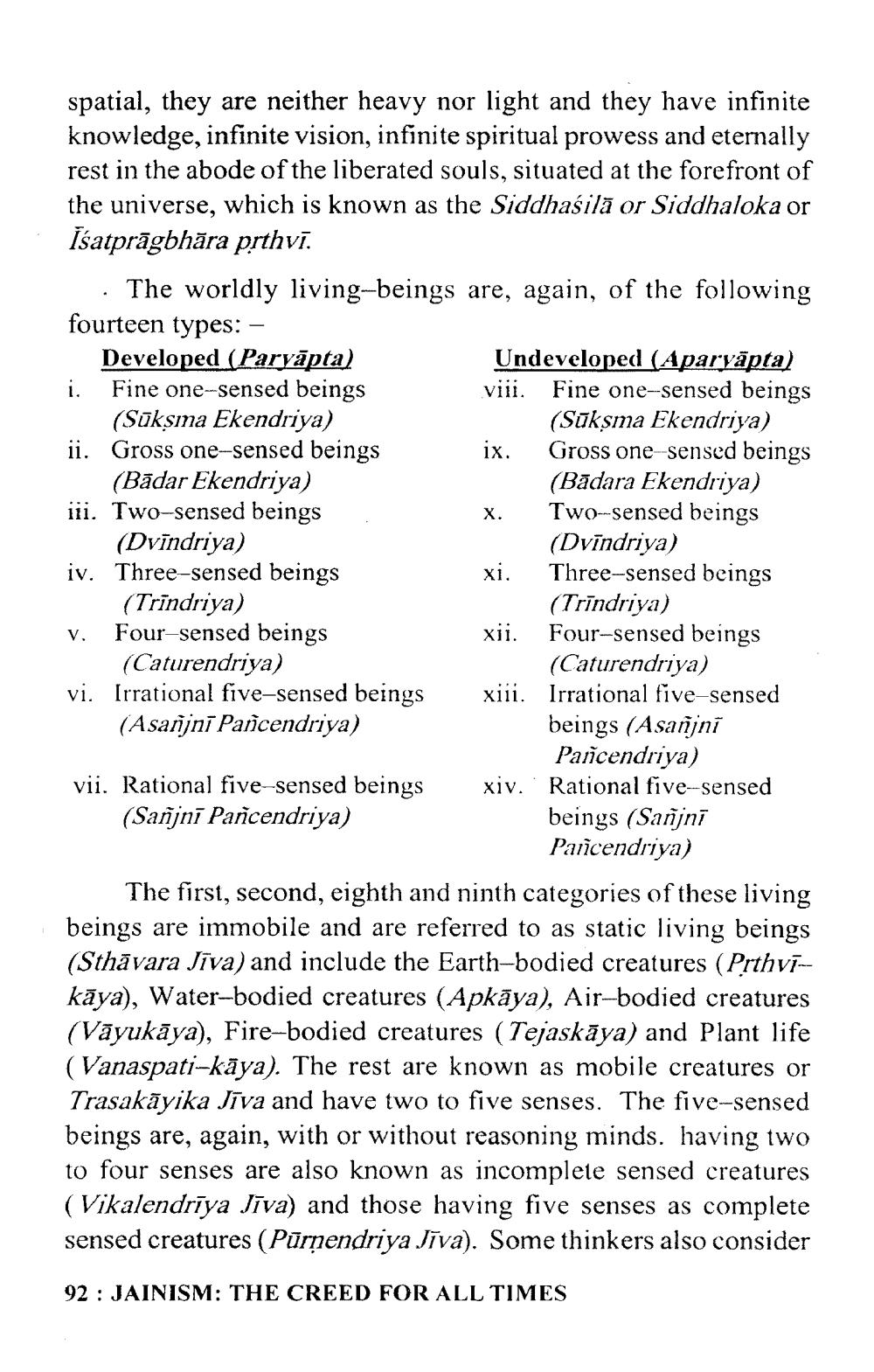________________
spatial, they are neither heavy nor light and they have infinite knowledge, infinite vision, infinite spiritual prowess and eternally rest in the abode of the liberated souls, situated at the forefront of the universe, which is known as the Siddhasilā or Siddhaloka or Isatprāgbhāra prthvi.
· The worldly living-beings are, again, of the following fourteen types: - Developed (Paryāpta)
Undeveloped (Aparyāpta) i. Fine one-sensed beings
viii. Fine one-sensed beings (Sūksına Ekendriya)
(Sūkşma Ekendriya) ii. Gross one-sensed beings
Gross one sensed beings (Bādar Ekendriya)
(Bādara Ekendriya) iii. Two-sensed beings
Two-sensed beings (Dvīndriya)
(Dvīndriya) iv. Three-sensed beings
xi. Three-sensed beings (Trindriya)
(Trīndriya) v. Four-sensed beings
xii. Four-sensed beings (Caturendriya)
(Caturendriya) vi. Irrational five-sensed beings xiii. Irrational five-sensed (Asasjnī Paricendriya)
beings (Asañjni
Parīcendriya) vii. Rational five-sensed beings xiv. Rational five-sensed (Sanjnī Pancendriya)
beings (Sanni
Parīcendriya) The first, second, eighth and ninth categories of these living beings are immobile and are referred to as static living beings (Sthāvara Jīva) and include the Earth-bodied creatures (Prthvikāya), Water-bodied creatures (Apkāya), Air-bodied creatures (Vāyukāya), Fire-bodied creatures (Tejaskāya) and Plant life (Vanaspati-kāya). The rest are known as mobile creatures or Trasakāyika Jīva and have two to five senses. The five-sensed beings are, again, with or without reasoning minds. having two to four senses are also known as incomplete sensed creatures (Vikalendrīya Jīva) and those having five senses as complete sensed creatures (Pārņendriya Jīva). Some thinkers also consider
92 : JAINISM: THE CREED FOR ALL TIMES




